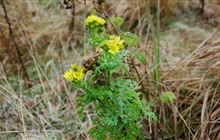Wilding conifers
Introduction
Wilding conifers are invasive weeds that threaten to permanently alter the unique landscapes that are only found in New Zealand.Conifers were introduced to New Zealand in the 1880s. Since then they have spread from forests, shelterbelts and erosion plantings.
Without any control they will form dense forests that have environmental consequences on our native ecosystems, use up scarce water, and alter iconic landscapes.
Wilding conifers are introduced conifers that are spreading
Wilding conifer or wilding pines is the New Zealand term for introduced conifers that are spreading across the landscape through natural regeneration.
Conifers are woody plants that have cones instead of flowers. They include cedars, pines, firs, cypress, larches, and spruces.
Wildings are often malformed, have large branches, have a pronounced taper, grow in mixed species groups and are in inaccessible places making their timber valueless or the extraction costs outweigh any timber value.
When conifer cones mature on the tree, they open to release masses of wind-blown seeds. These seeds travel kilometres downwind and need no special conditions to take root and grow.
Wilding conifers are a problem
Wilding conifers cover more than 1.8 million hectares of New Zealand. Despite control efforts they are spreading at an estimated rate of 5% a year.
Without large scale funding and control within twenty years 20% of New Zealand will be covered with wilding pines.
As wilding conifers spread across our landscapes they:
- reduce the numbers of plants and animals that are only found in New Zealand
- impact on farming by significantly reducing the available grazing land
- create a fire risk as they are dense and impenetrable with no road access
- limit recreation and tourism related activities
- can cause acidification of soils which leads to the depletion of some minerals such as calcium
- use more water, so runoff is decreased which affects streams in the catchment
- release large volumes of water vapour to the atmosphere through their leaves
- provide habitat for exotic pest plants, animals and diseases.
The photos below were taken over 17 years from Mid Dome, Southland. They show how rapidly wilding conifers colonise the landscape when left unchecked.

Wilding conifer spread in 1998, 2004 and 2015 in Mid-Dome, Southland
Image: Environment Southland ©
The problem species
Ten introduced conifer species are responsible for most of the wilding conifers.
Two of these species, radiata pine and Douglas fir, are also important commercial species. As long as they are planted in an appropriate place, at suitable spacings, and tended as they grow.
Contorta pine (Pinus contorta) pine has been declared an unwanted organism under the Biosecurity Act 1993. That means it cannot be bred, propagated, distributed or sold in New Zealand.
Find more information on New Zealand Plant Conservation Network website:
- Contorta pine or lodgepole pine (Pinus contorta)
The most aggressive species with the youngest coning age and farthest spread. Has been declared an unwanted organism under the Biosecurity Act 1993 since 2001, which means it cannot be bred, propagated, distributed or sold. - Douglas fir (Pseudotsuga menziesii).
The second most common commercial timber species, but can spread rapidly in montane areas. - Radiata pine (Pinus radiata)
The most common commercial timber species, but can spread in lowland situations and affect native bush regeneration. - Ponderosa pine (Pinus ponderosa)
Historically grown as an amenity tree in very dry areas where it often spreads. - Scots pine (Pinus sylvestris) and Bishop pine (Pinus muricata)
Has a bluish tinge, rarely grown for timber, but have spread from early trial sites - Maritime pine (Pinus pinaster)
Very large tree that often grows in association with radiata pine in coastal areas. - Corsican pine (Pinus nigra)
Slower to mature than lodgepole or contorta pine, but can spread very large distances. - Dwarf mountain pine (Pinus mugo)
A short bushy species that was planted in alpine areas, has spread slowly, but is very hard to kill. - European larch (Larix decidua)
A distinctive deciduous conifer, can be invasive in wetter areas.
Methods of control
Find out ways wilding conifers can be controlled.
How you can help
Join a group
The Wilding Pine Network supports community-led wilding conifer control efforts. Visit their website to find a community group in your area.
You can also contact your local council or local DOC office for information about what you can do to help stop the spread.
Record sightings
Contribute to iNaturalist and help build a map of the distribution of wilding conifers.
- Take photos of the whole tree, plus close-up photos of cones, needles and bark.
- Record the location and date.
- If you are not absolutely sure what species it is, tick the box 'ID needed'.
National management
Wilding Pines Management Strategy
This is a framework for central government, local government, forestry and farming industries, landowners, researchers and communities to collaboratively work together to prevent the spread of wilding conifers, and efficiently contain or eradicate established areas of wilding pines by 2030.
New Zealand Wilding Pines Management Strategy
National Wilding Conifer Control Programme
The programme ensures a collaborative, coordinated and effective approach to national wilding management. It includes central and local government agencies, and is supported by a wide range of stakeholder groups.




